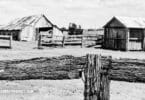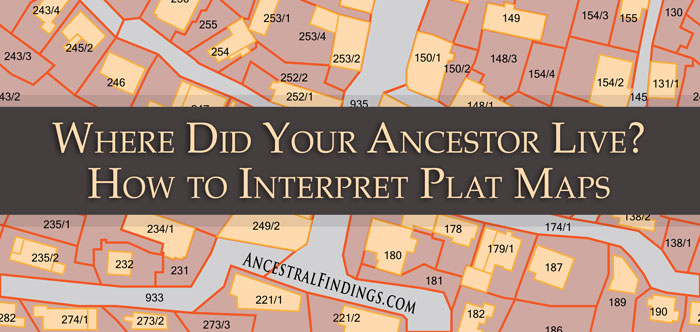Locating the home of an ancestor, or the land on which they lived is an exciting part of genealogy. Being able to locate these places and visit the in-person gives you a much closer connection to your ancestors and a deeper understanding of what their lives were like. There is nothing quite like standing on the steps of your ancestor’s old home, or on the land where their home once stood, to give you the impression of traveling back in time to when your ancestor lived there.
Even though the landscape may have changed, you know you are standing where they once stood and seeing at least some of the things they saw when they lived there. Those things alone can help you imagine your ancestors’ lives in much more vivid detail. This is especially true in historic areas that haven’t changed much over the centuries, though it is true to some degree anywhere. Here’s how to find the location of your ancestor’s home or land.
Finding a Home, Technique #1
One of the easiest ways to find an old ancestral home is to look at the ancestor in question’s death certificate and/or obituary. If the person died at home, their address will be listed on the death certificate. If they died elsewhere, but the funeral was held at the home (or the family had calling hours there, for friends and neighbors to visit and pay their respects), it will usually be listed in the obituary.
With this information, it is usually a simple matter to find the house. The only exception is if the address numbers or street names have changed in the years since your ancestor died. You can discover this by looking at old maps of the city. These can typically be found in the city’s city hall or local archives. Compare those maps from the era of your ancestor to the maps of today to look for any discrepancies in addresses and/or street names, and pinpoint the location of the house (or the place where the house once stood).
Finding a Home, Technique #2
City directories were published extensively in most cities and towns across the United States from the mid-1800s to the early 1900s. These were the “phone books” of their day before there was a telephone or large-scale use of it. City directories would list every adult in a city or town, including their occupation and address. Most of the time, wives were listed along with their husbands, though once in a while you will find an instance when only the husband is listed.
Once you have the address from the city directory, you can find the house using the same map technique listed above. Or, if you have no reason to believe address numbers or street names have changed since the directory was published, you can go right to the house, or former location of it.
City directories can be found in local archives, some local public libraries, city halls, and on Ancestry.com, which has a huge collection of the from all around the country going back to the time these directories first started to be published on a nationwide basis.
Finding an Ancestor’s Land
If your ancestor was a farmer with a lot of land, you might not be able to get an exact address. Rural homes often did not have addresses in the old days. They were listed in census records and old town records as being on a rural route, or sometimes just by a description of where the land was located.
If you are looking for land that was owned by your ancestor before 1800, you should be looking in archives buildings or courthouses for bills of sale that were usually hand-written. The bill of sale to your ancestor (or from your ancestor to the person he was selling it to) will usually have a detailed description of the land, including how many miles it is in any number of directions from well-known landmarks and town lines. It will also describe physical features of the boundaries of the land which may still be there. You can use this information to take a trek out into the town to try to locate the land based on these descriptions. You can always consult ancient local maps if you need additional assistance, especially if the land has changed a lot since then.
Land that was owned by your ancestor from the early 1800s to the present is usually laid out on plat maps. You may have to go into the local courthouse to research land title changes to find a record of your ancestor’s land (which should show when they owned it and when or if they sold it). The land records will have either a description of the borders of the land like ancient records do or its actual coordinates. Using this information, you can find your ancestor’s land on the local plat maps, then go out and visit it in person.
Locating an ancestor’s home or land is very rewarding. You are making a pilgrimage to the place they once lived, loved, worked, and did all the things that were important to them. Some of your other ancestors may have even been born there, died there, or gotten married there (and sometimes all three!). It gives you a very tangible connection to your ancestor that you can’t get in very many other ways. Start looking for your ancestor’s home or land today, and add an important element to your genealogy research.






